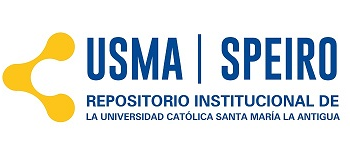Roads of colonial communication in Veraguas, land and maritime
DOI:
https://doi.org/10.37387/ipc.v10i2.296Keywords:
Veraguas, towns, urbanism, architectural heritage, Colonial, royal roads, road communicationAbstract
This work analyzes the creation, evolution, and functions of communication channels in the colonial era in the current territory, including the Province of Veraguas. The classification was made in chronological stages, starting from the first visit to the current Province of Veraguas by Admiral Cristóbal Colon in 1503 and then the foundation of the towns from the end of the 16th century. Here the land connections and maritime routes used in the colonial era are described, their importance in the foundation and development of the towns in the studied areas, the use by which these communication networks were created, and their current state. In order to develop the current article, extensive written documentation, a visit to the places, graphic documentation, photographs, unpublished plans were analyzed, which were of great help to know these elements of study so essential in the history and identity of our country, the Province, its towns and the Veraguense society. A graphic database and a theoretical proposal are developed, which can be used as didactic material and for future research by professionals, students, and the cultural use of the entire Panamanian population and internationally. Also, it details the possible causes for which many of these communication channels have fallen into neglect and disuse, in conclusion, some proposals for their use from the tourist, cultural and theoretical point of view.
Downloads
Published
How to Cite
Issue
Section
License
Copyright (c) 2022 https://creativecommons.org/licenses/by-nc-sa/4.0/legalcode

This work is licensed under a Creative Commons Attribution-NonCommercial-ShareAlike 4.0 International License.
1. The authors preserves the patrimonial rights (copyright) of the published works, and favors and allows their reuse.
2. The journal (and its contents) use Creative Commons licenses, specifically the CC BY NC SA type, where: "the beneficiary of the license has the right to copy, distribute, display and represent the work and make derivative works provided you acknowledge and cite the work in the manner specified by the author or licensor."
3. They can be copied, used, disseminated, transmitted and exhibited publicly, provided that: i) the authorship and the original source of its publication (magazine, publisher and URL, DOI of the work) are cited; ii) are not used for commercial purposes.
4. Conditions of self-archiving. Authors are encouraged to electronically disseminate the post-print versions (version evaluated and accepted for publication), as it favors their circulation and dissemination, increases their citation and reach among the academic community.











